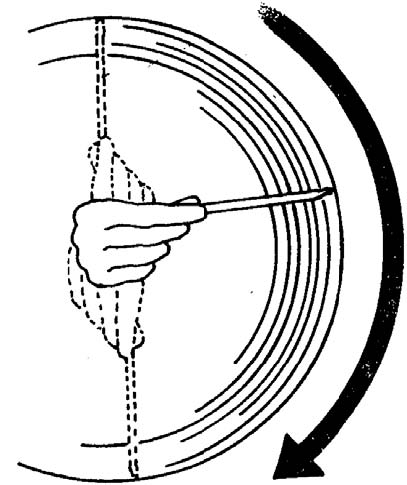 This is the Archived Desktop Edition.
This is the Archived Desktop Edition.
You should be transferred to the Newest Edition for Desktop and Mobile within 2 seconds.
Lesson 2: Temperature
Section II: Thermometers
2-11
2-11. HOW DO I "SHAKE DOWN" A GLASS THERMOMETER?
a. Stand in a Clear Area. Stand in a clear area so that you will not hit the thermometer against anything during the shaking down process. Remember, the thermometer is glass and may shatter if it strikes anything hard like a table or bed frame.
b. Grasp the Stem End Securely. Grasp the end of the thermometer that is opposite the bulb end with your fingers and thumb. The stem ends in a knob (usually colored either blue or red) that helps you to hold onto the thermometer during the shaking down process.
c. "Crack the Whip." Shake the thermometer down using quick, sharp, downward wrist motions
(figure 2-2). These quick wrist motions are sometimes called "cracking the
whip." Perform several of these motions. You may have a problem getting
effective "cracks" at first, but with practice you will soon be able to lower
the temperature to the necessary level quickly.

Figure 2-2. Shaking down a glass thermometer.
d. Read the Thermometer. After shaking down the thermometer, read the temperature shown in order to evaluate the effectiveness of your efforts.
(1) If the thermometer reading is below 94ºF (34.4º C), you have shaken down the thermometer sufficiently.
(2) If the thermometer reads 94º F (34.4º C) or above,
continue to shake down the thermometer until a
desired reading is shown.
